Art & Exhibitions
Damien Hirst’s Fake Antiquities From an Imaginary Shipwreck Are on View Alongside the Real Thing at the Galleria Borghese—See It Here
Italy's culture minister hopes the show will mark "a new renaissance for Italy" and its tourism.
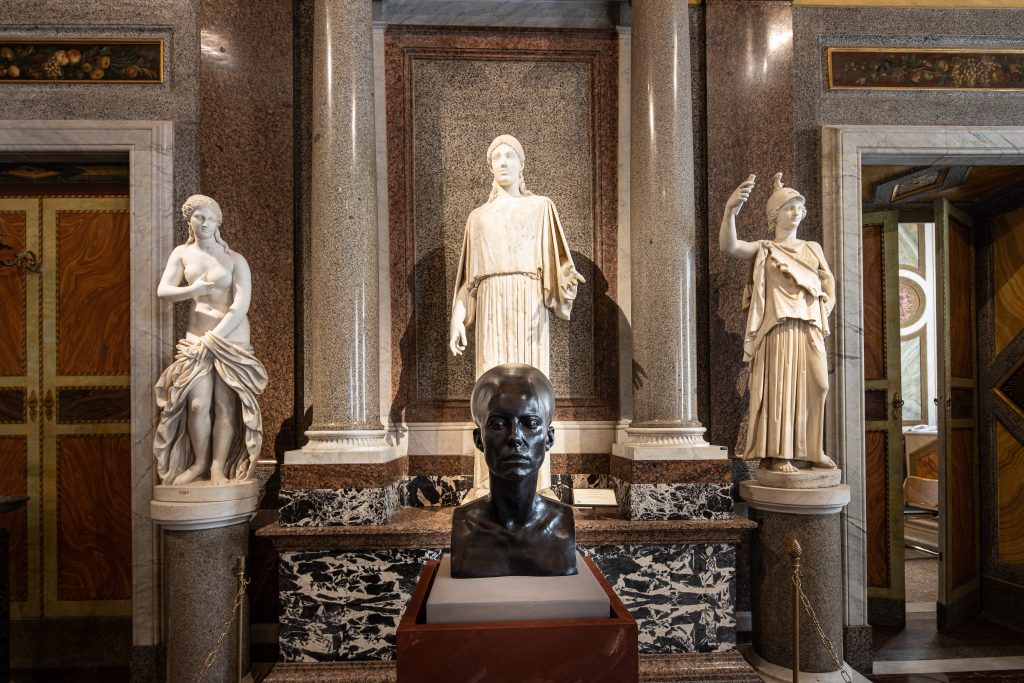
Italy's culture minister hopes the show will mark "a new renaissance for Italy" and its tourism.

Sarah Cascone

Damien Hirst‘s over-the-top art has landed in Rome, where works from his love-it-or-hate-it series “Treasures from the Wreck of the Unbelievable” are on view alongside antiquities and Renaissance and Baroque masterpieces at the Galleria Borghese.
The result is “an experience that goes beyond eras; that touches the strings of emotion,” museum director Francesca Cappelletti told Artnet News in an email.
The Galleria Borghese’s storied art collection, started by Cardinal Scipione Borghese in the 17th century, includes life-size sculptures by Gian Lorenzo Bernini, Caravaggio paintings, and classical antiquities. They are displayed amid richly decorated marble halls—an ornate setting that offers the perfect backdrop for Hirst’s elaborate “Treasures.”
“Inserted among the masterpieces of the Galleria’s collection, these works celebrate the desire for variety held by the museum’s founder, Cardinal Scipione Borghese,” the museum said in a statement.
As Italy looks to rebound from the pandemic, which has limited tourism, the government sees the opening of the Hirst show as the start of “a new renaissance for Italy,” minister of culture Dario Franceschini said in a statement.
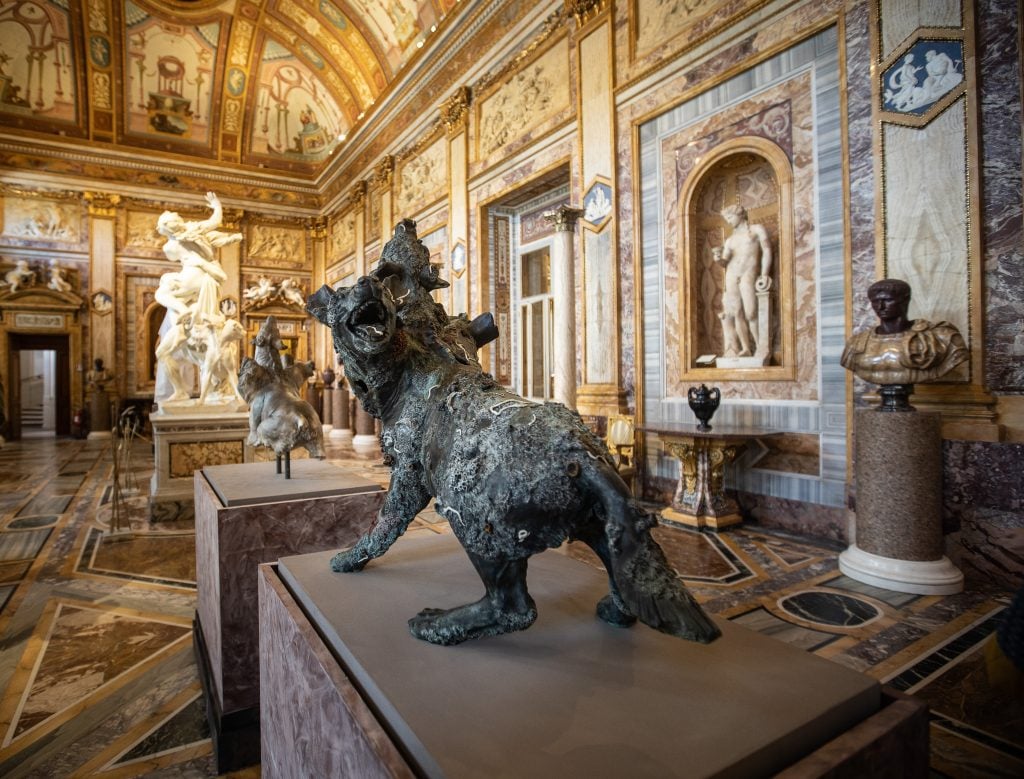
Damien Hirst, Cerberus (Temple Ornament) (2009). Photo by A. Novelli © Galleria Borghese Ministero della Cultura © Damien Hirst and Science Ltd. All rights reserved DACS 2021/SIAE 2021.
Hirst’s sculptures come with an elaborate (and untrue) backstory. Purportedly 2,000 years old, they were supposedly uncovered in the cargo of a sunken ship rescued off the coast of East Africa in 2008, part of an underwater archaeology venture funded by the British artist (hence the coral and barnacles encrusting some of the works).
Even though Hirst produced a flashy Netflix mockumentary about the so-called recovery effort, there were always hints that the dramatic backstory was nothing more than a fantastical fiction. Cif Amotan II, the freed slave said to have amassed the massive collection in the first or second centuries, is actually an anagram for “I am fiction.”
“These works are all made with the extraordinary technical processing of traditional and precious materials, such as marble, alabaster, lapis lazuli, malachite and bronze,” Anna Colina, who co-curated the Borghese show with Mario Codognato, told Artnet News in an email.
The original “Treasures” exhibition, which reportedly cost $65 million to produce, debuted at the Palazzo Grassi and the Punta della Dogana in 2017 to decidedly mixed reviews. (There was also an animal rights protest involving large quantities of poop.) Artnet News called it “a contemporary-art spectacle of unparalleled ambition,” while ARTnews said it was “undoubtedly one of the worst exhibitions of contemporary art staged in the past decade.”
The Galleria Borghese exhibition also features works from Hirst’s polka-dotted “Colour Space” series, which has never been shown in Italy before. The paintings are a departure from his well known “Spot Paintings,” made with mechanical precision on a uniform grid, in that they are much looser, with circles of varying sizes and shapes overlapping one another, betraying the presence of the artist’s hand.
See more photos of the show below.
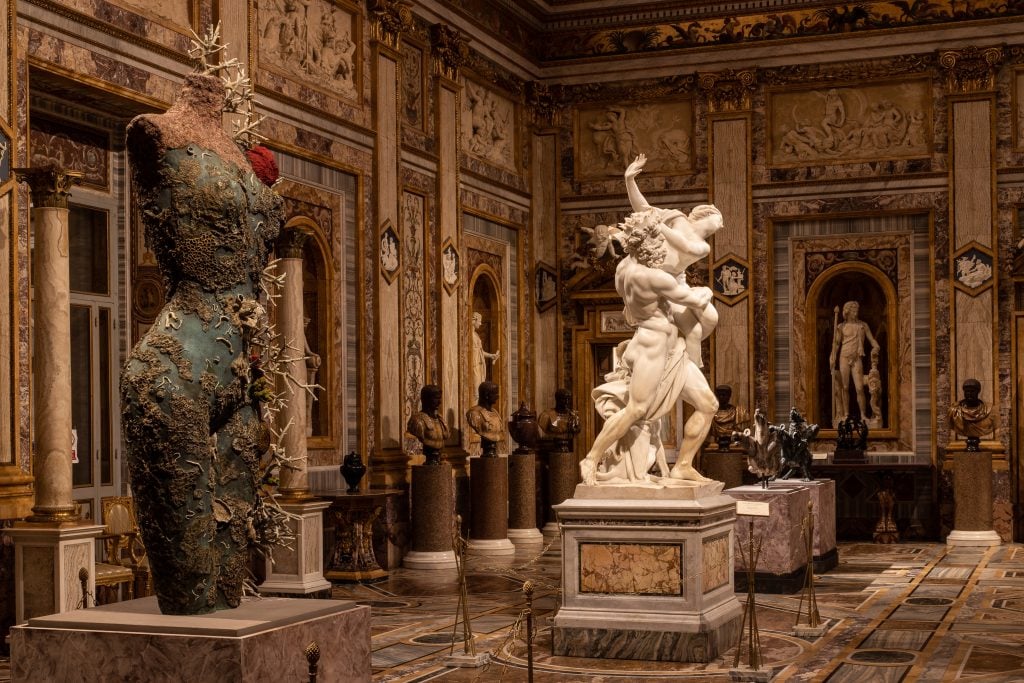
Gian Lorenzo Bernini, Ratto di Proserpina (1621–22) and Damien Hirst, Grecian Nude (2013). Photo by A. Novelli ©Galleria Borghese Ministero della Cultura © Damien Hirst and Science Ltd. All rights reserved DACS 2021/SIAE 2021.
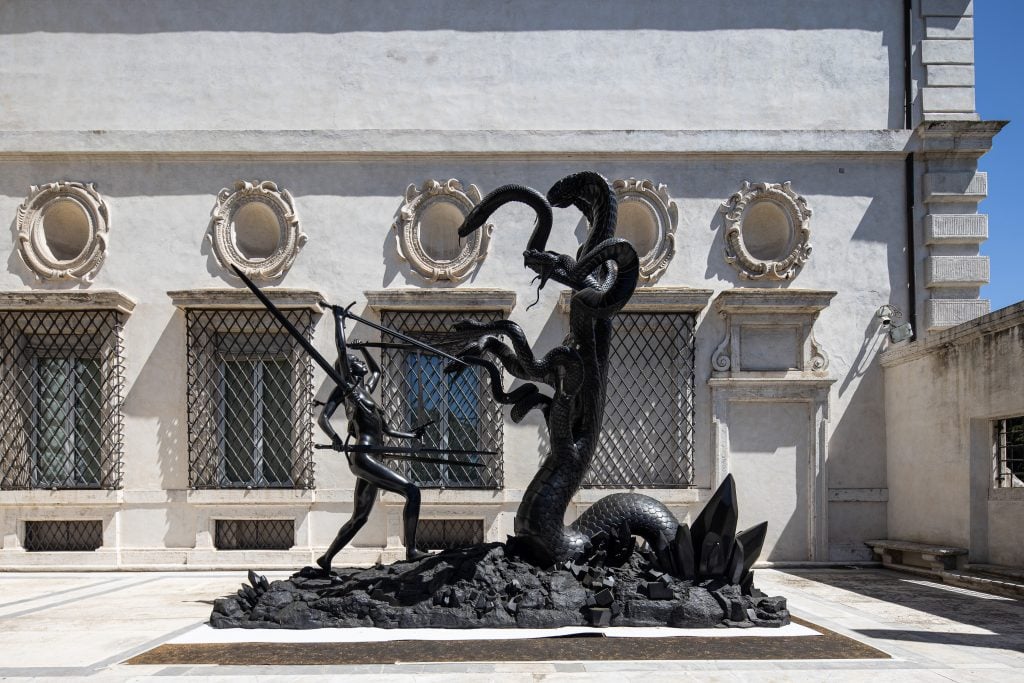
Damien Hirst, Hydra and Kali (2015). Photo by A. Novelli © Galleria Borghese Ministero della Cultura © Damien Hirst and Science Ltd. All rights reserved DACS 2021/SIAE 2021.
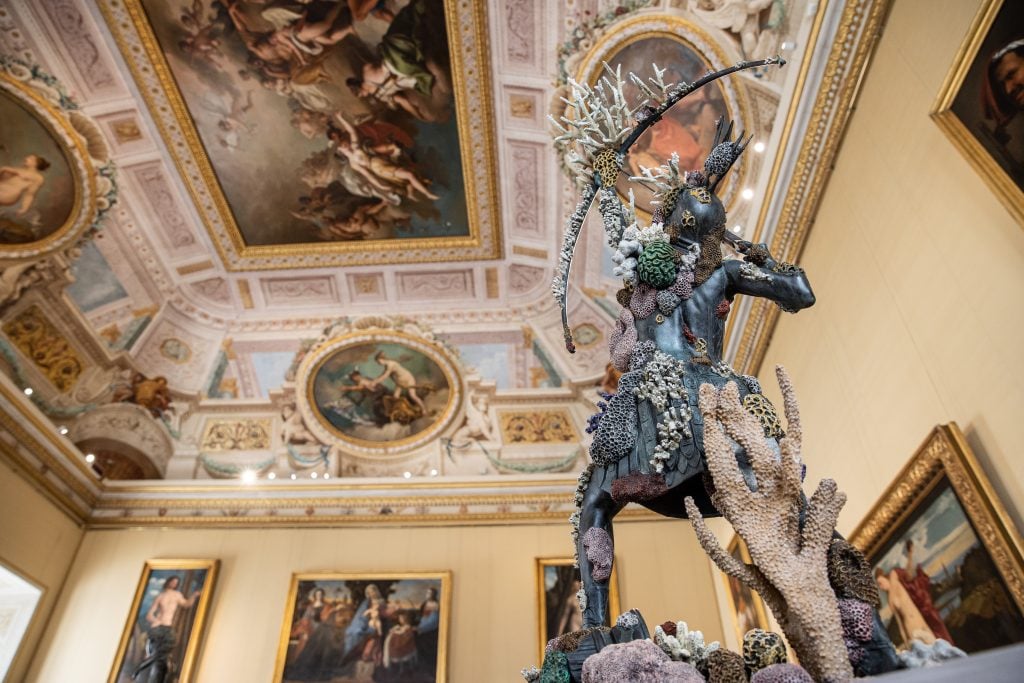
Damien Hirst, Female Archer (2013). Photo by A. Novelli ©Galleria Borghese Ministero della Cultura © Damien Hirst and Science Ltd. All rights reserved DACS 2021/SIAE 2021.
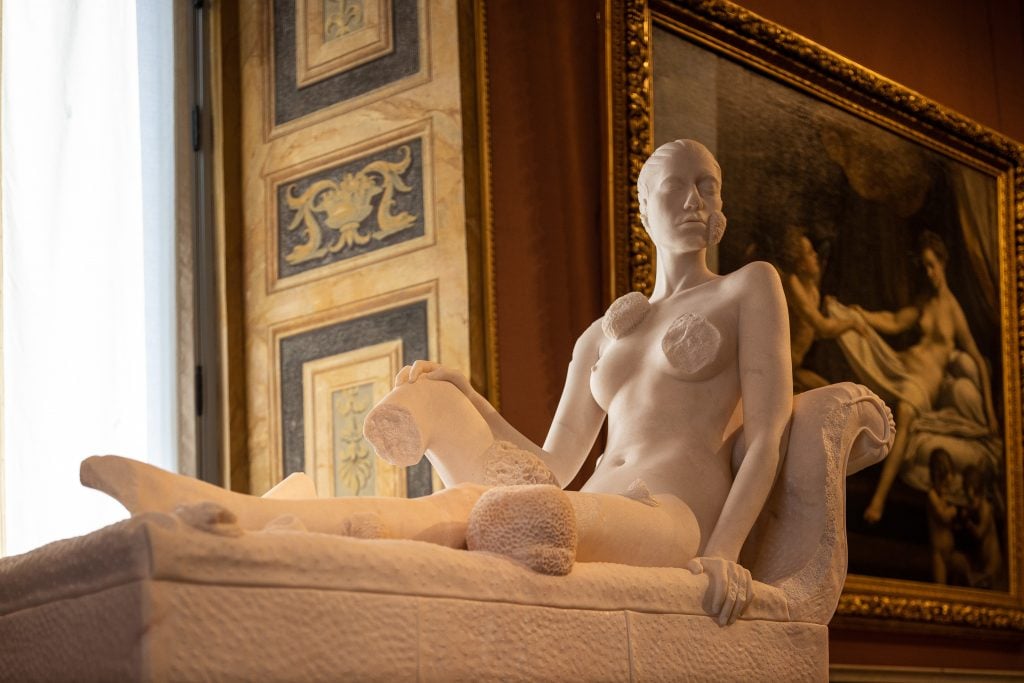
Damien Hirst, Reclining Woman (2012). Photo by A. Novelli ©Galleria Borghese Ministero della Cultura © Damien Hirst and Science Ltd. All rights reserved DACS 2021/SIAE 2021.
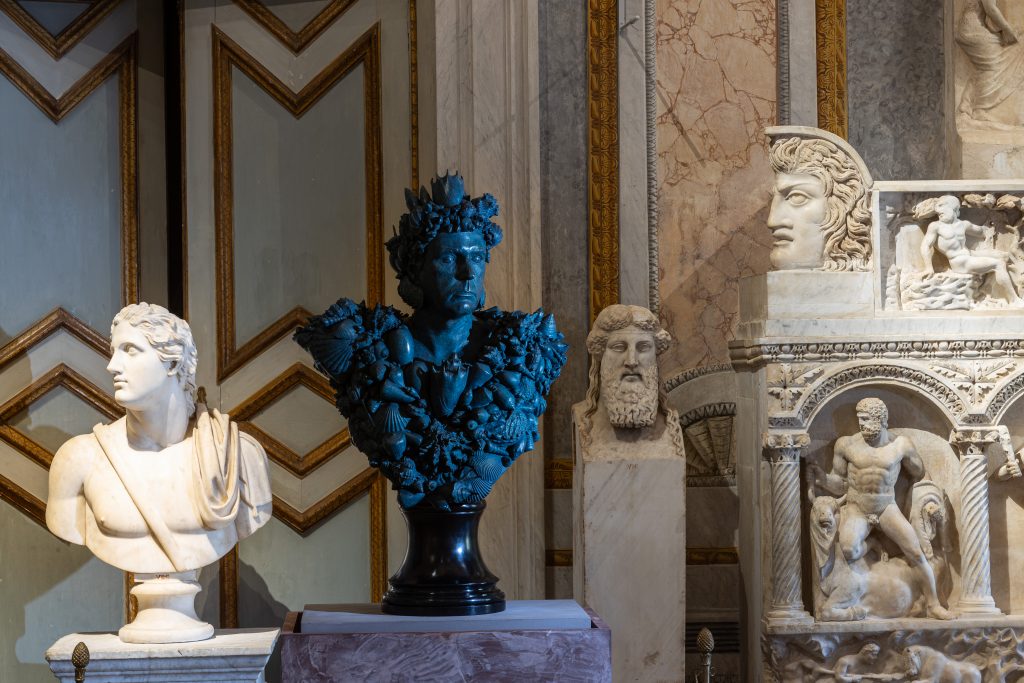
Damien Hirst, Neptune (2011). Photo by A. Novelli ©Galleria Borghese Ministero della Cultura © Damien Hirst and Science Ltd. All rights reserved DACS 2021/SIAE 2021.
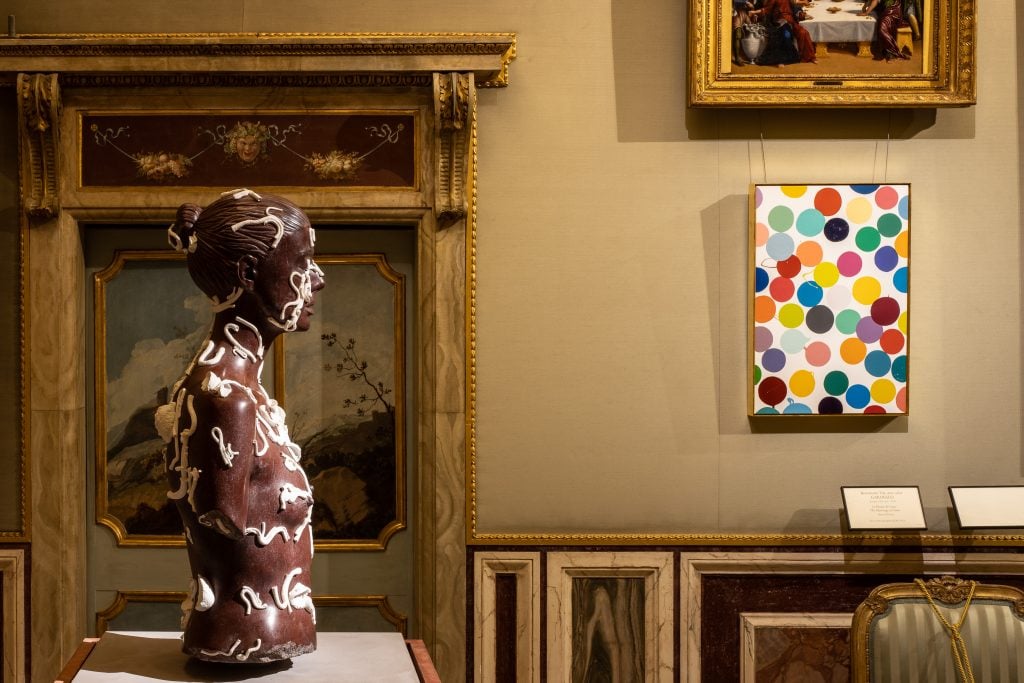
Damien Hirst, Fern Court (2016) and The Skull Beneath the Skin (2014). Photo by A. Novelli, ©Galleria Borghese, Ministero della Cultura © Damien Hirst and Science Ltd. All rights reserved DACS 2021/SIAE 2021.
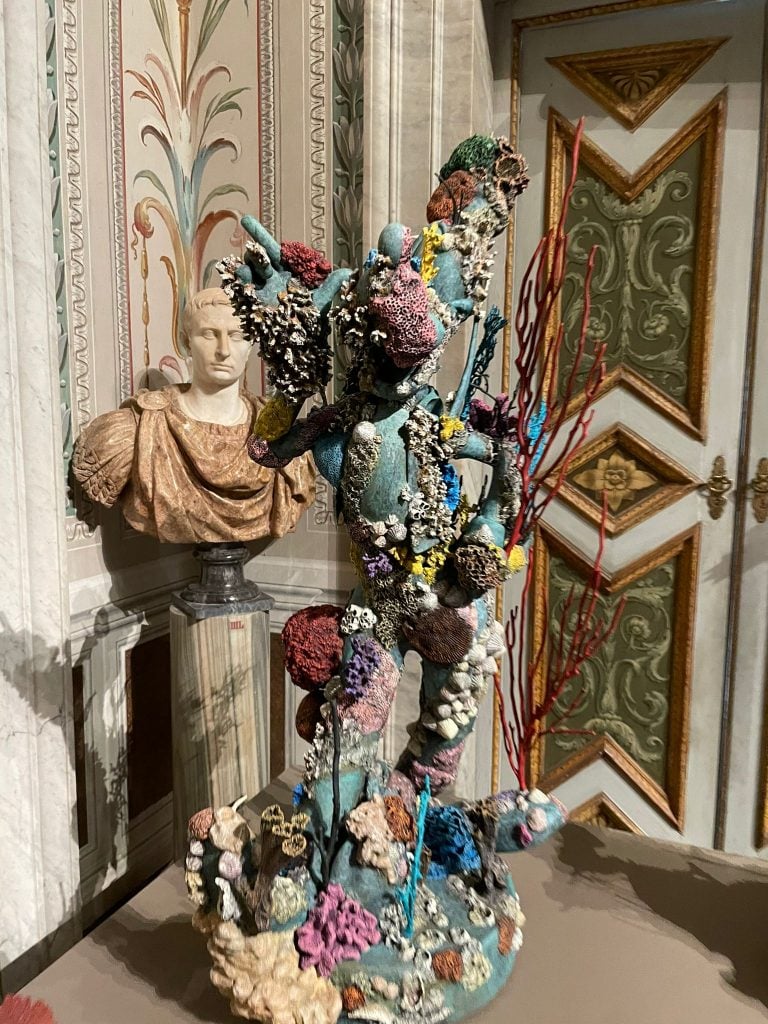
“Damien Hirst: Archaeology Now” at the Galleria Borghese, installation view. Photo ©Galleria Borghese Ministero della Cultura ©Damien Hirst and Science Ltd. All rights reserved DACS 2021/SIAE 2021.
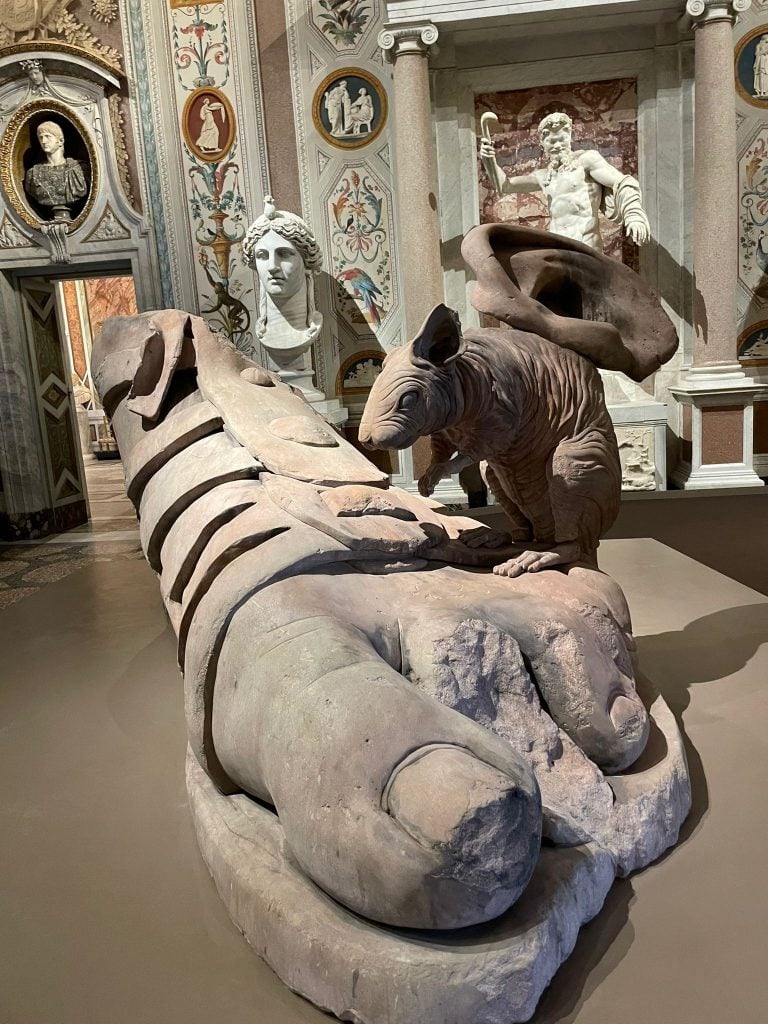
“Damien Hirst: Archaeology Now” at the Galleria Borghese, installation view. Photo ©Galleria Borghese Ministero della Cultura ©Damien Hirst and Science Ltd. All rights reserved DACS 2021/SIAE 2021.
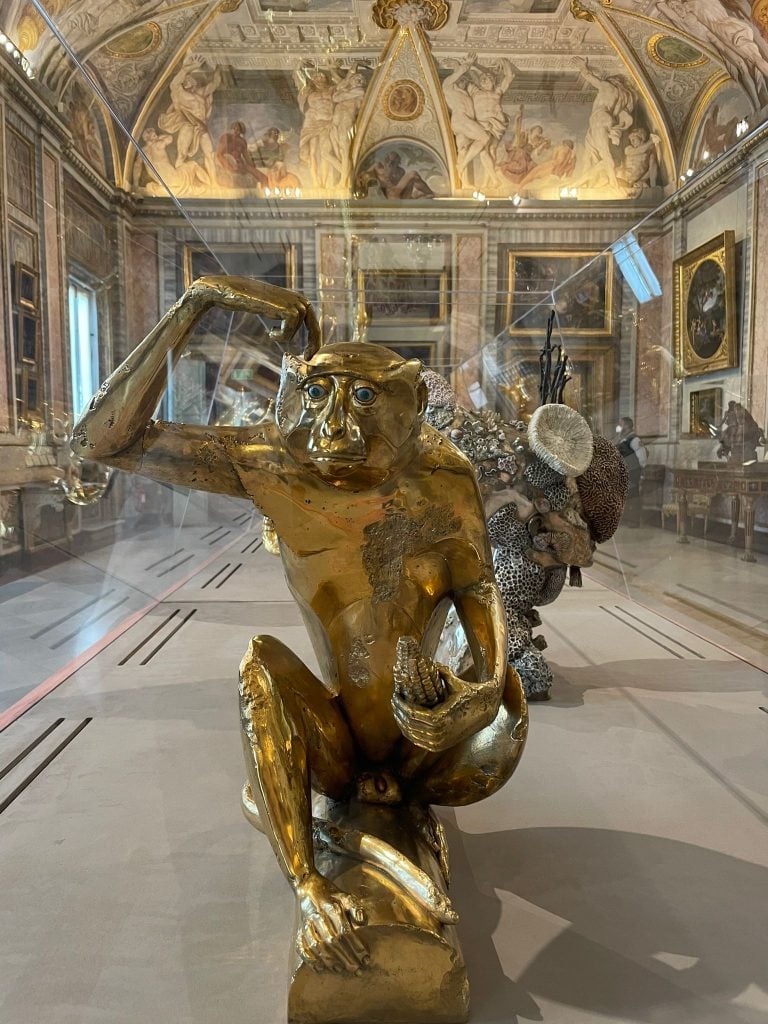
“Damien Hirst: Archaeology Now” at the Galleria Borghese, installation view. Photo ©Galleria Borghese Ministero della Cultura ©Damien Hirst and Science Ltd. All rights reserved DACS 2021/SIAE 2021.
“Damien Hirst: Archaeology Now” is on view at the Galleria Borghese, Piazzale Scipione Borghese 5, Rome, June 8–November 7, 2021.